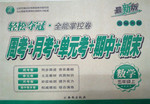题目内容
【题目】Most parents and teachers want children to be happy. To that end, parents find themselves doing things for kids to make them happy, like buying gifts, taking them for ice cream, playing games together, or helping with homework.
Teachers are constantly doing things for children, too, like bringing treats to class, planning fun trips, and supporting students in other immeasurable ways.
Do acts of kindness toward children make us happier parents and teachers? Of course they do.
Unfortunately, we don’t make children happy by simply enabling them to be receivers of kindness. We increase their feelings of happiness and well-being by teaching them to be givers of kindness.
The truth is that children are born to be altruistic. But somewhere between birth and 4th grade, they are socialized to think more about themselves than others.
How do we change this and improve children’s well-being?
A recent study, Kindness Counts, conducted by researchers from the University of British Columbia and the University of California, broke new ground by showing the benefits gained by teens when they were taught happiness-increasing skills.
For a month, several hundred 9-11-year-olds performed and recorded three acts of kindness each week for anyone they wished. Another several hundred kept track of three pleasant places they visited during the week.
Not surprisingly, the results were consistent with adult studies. When kids performed acts of kindness or took notice of the pleasant places they visited during the week, they significantly increased feelings of happiness and satisfaction.
But hose who performed acts of kindness received an additional benefit. Measuring how well children were liked or accepted by their peers(同伴), the study showed those who performed acts of kindness gained an average of 1.5 friends during the four-week period ---- good support for the idea that “nice guys finish first.”
【1】What do most parents and teachers do to make children happy?
A. Do good deeds for them.
B. Take them to see funny things.
C. Teach them the secret of happiness.
D. Develop their happiness-increasing skills.
【2】The underlined word “altruistic” in Paragraph 5 is closest in meaning to “ ”.
A. optimistic B. energetic
C. curious D. generous
【3】What can be concluded from the study?
A. Children can change their attitude easily.
B. Happy people are likely to do good deeds.
C. Acts of kindness are the key to happiness.
D. Visits to places lead to much more happiness.
【4】What does the underlined part “additional benefit” in the last paragraph refer to?
A. Winning support from teachers.
B. Broadening their social circle.
C. Showing respect for others.
D. Getting higher test scores.
【答案】
【1】A
【2】D
【3】C
【4】B
【解析】文章主要讲述了当孩子们表现出善意或注意到他们在一周内参观过的愉快的地方时,他们会大大的增加幸福感和满足感,行善举更容易被同龄孩子们喜欢和接受,平均每四周会交到1.5个朋友。好人会有好报。
【1】细节理解题。根据文章第一段“To that end, parents find themselves doing things for kids to make them happy, like buying gifts, taking them for ice cream, playing games together, or helping with homework.”为此,家长们为孩子们做很多事情让他们高兴,比如买礼物,一起做游戏,或者帮助他们做家庭作业。以及“like bringing treats to class, planning fun trips, and supporting students in other immeasurable ways.”教师为孩子们做很多事情例如给班级上课,计划有趣的旅行以及以其他方式给孩子提供帮助。根据题意,故选A。
【2】词义猜测题。根据“We increase their feelings of happiness and well-being by teaching them to be givers of kindness.” 我们通过教导他们成为仁慈的给予者来增加他们的幸福感和幸福感。以及“The truth is that children are born to be”事实是,孩子们天生就是……,可推知“altruistic”无私的,慷慨的。故选D。
【3】推理判断题。根据“When kids performed acts of kindness or took notice of the pleasant places they visited during the week, they significantly increased feelings of happiness and satisfaction.”当孩子们表现出善意或注意到他们在一周内参观过的愉快的地方时,他们会大大的增加幸福感和满足感,可推知根据研究表明善举能让他们快乐。故选C。
【4】词义猜测题。根据倒数第二段内容研究表明当孩子们表现出善意或注意到他们在一周内参观过的愉快的地方时,他们会大大的增加幸福感和满足感,最后一段中讲到行善举更容易被同龄孩子们喜欢和接受,平均每四周会交到1.5个朋友。这是行善举获得的额外的好处。根据题意,故选B。

 轻松夺冠全能掌控卷系列答案
轻松夺冠全能掌控卷系列答案